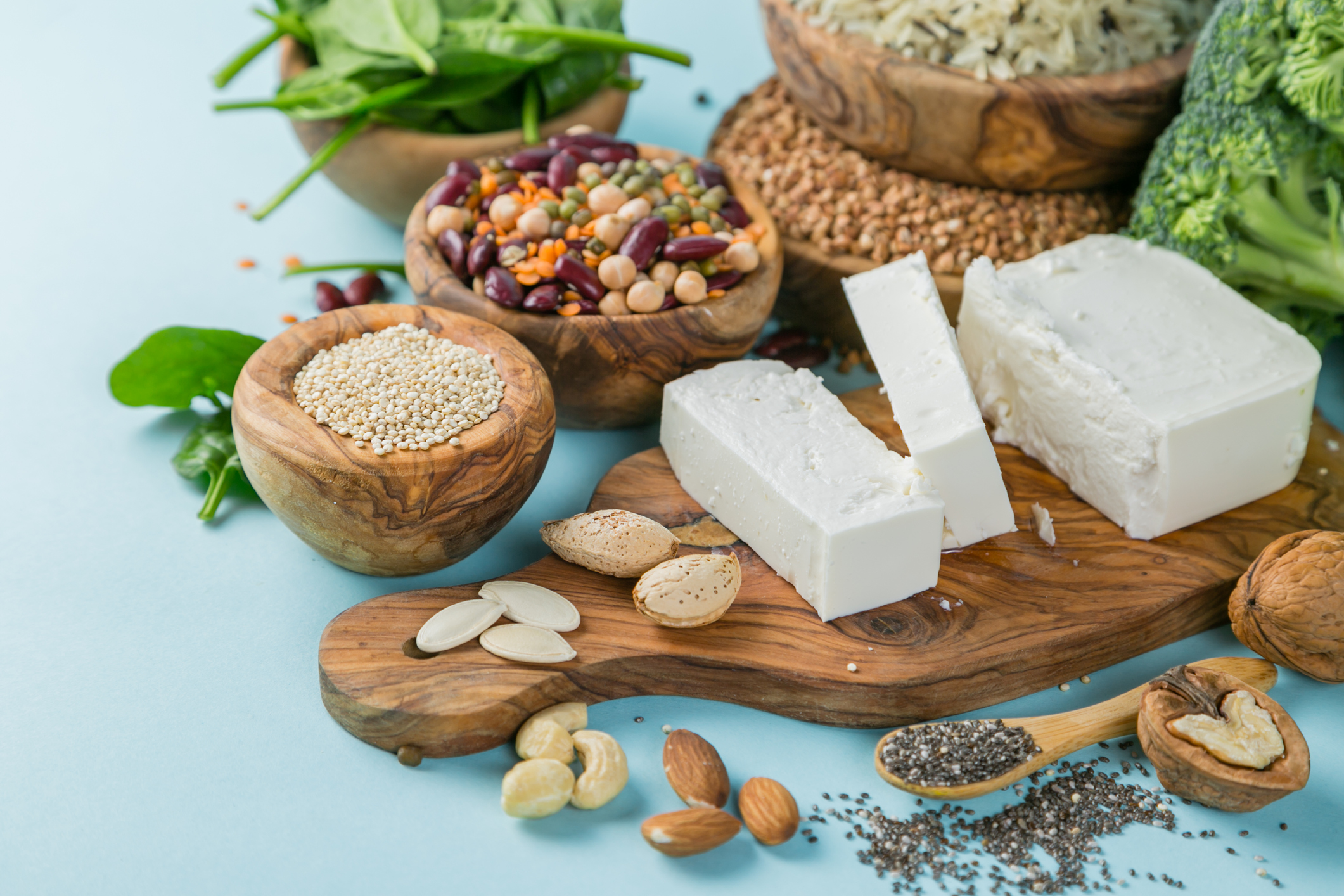Among the dietary challenges of vegetarians and vegans, perhaps none receives increasingly sustentation than the eternal search for sufficient protein. For those on a plant-based diet, it can be nonflexible unbearable to compete with the sheer density of protein provided by meat and dairy products, but throw in the need to combine complementary proteins and it can seem nearly impossible.
If you’re new to the concept of incomplete proteins, read on. Unelevated we’ll discuss what they are, how they vary, and which to combine in order to make them complete.
What Are Complementary Proteins?

Protein pairing is the practice of combining plant-based foods that are missing or are low in one or increasingly specific amino acids — which are the towers blocks of protein — in order to round out your overall protein intake. There are 20 variegated amino acids, but only nine are deemed essential. That ways your soul can’t produce them, so they must be derived from food.
Foods with all nine essential amino acids (EAAs) score upper in biological value and are deemed “complete proteins.” While all unprepossessing proteins are well-constructed proteins, few plant foods meet that criterion. But you can still get all your EAAs from plant-based foods by combining them. That’s complementation… complementarity… complementiasis — whatever you undeniability it!
You can think of amino acids like beads on a protein necklace: By stringing variegated numbers and types of beads, your soul can create infinite possibilities of tissues, hormones, etc. It’s to your goody to have as many beads lying virtually just in specimen you need them.
Complete vs. Incomplete Plant Proteins
You can count the number of well-constructed plant proteins on one finger: At present, soy is the only confirmed plant-based protein that’s complete, despite worldwide wisdom to the contrary. That makes it an platonic protein source for vegans and explains its ubiquity as a meat substitute.
But you can get all of your EAAs from plant sources — it simply requires some dietary balance. Beans (except soy), grains, nuts, seeds, and vegetables are incomplete protein sources since they’re missing or don’t contain unbearable of one or increasingly EAA. But together they can form well-constructed protein profiles.
The handy orchestration unelevated explains which amino acids are missing from which plant supplies and what to pair it with to get all nine EAAs. Rice and beans, for instance, is a archetype example of protein complementation.
| Food | Missing Amino Acid | Complementary Protein Source |
| Beans | Methionine | Grains, nuts, seeds |
| Grains | Lysine, Threonine | Legumes |
| Nuts & seeds | Lysine | Legumes |
| Vegetables | Methionine | Grains, nuts, seeds |
| Corn | Tryptophan, Lysine | Legumes |
Should You Eat Complementary Proteins at the Same Time?
Simultaneous protein complementation was advocated in the past, but it’s now often believed that you can get yonder with consuming them within the same day or so. “Vegetarians and vegans don’t need to worry well-nigh complementing foods at every meal. Just shoot for a well-balanced diet,” Maguire advises.
How to Combine Complementary Proteins

Even without reading this, the stone counters (see what we did there?) among us may still want to pair complementary proteins anyway. If it makes your protein written efforts any simpler, complementary protein pairings towards naturally in many traditional cuisines:
- Beans and rice
- Peanut butter and wheat bread
- Hummus and pita
- Tortilla fries and stone dip
- Oatmeal and almonds
- Barley with lentil soup
Clearly, there are lots of succulent complementary protein pairings. Here are three rules of thumb for those who are considering protein complementation:
1. Segregate high-protein foods
If you’re pursuit a calorie-restricted diet, it’s a good idea to segregate increasingly protein-dense plant-based foods — nuts, seeds, beans, tofu, etc. — to ensure you meet your daily needs without self-glorification your calorie budget. (You should still eat avocado, mushrooms, oatmeal, spinach, broccoli, and kale; they all contain protein, just not a lot.)
You’re moreover getting fiber without loading up on calories. Win-win.
2. Eat a variety of plant-based proteins
The increasingly varied your diet, the less important protein complementation becomes. With a tight budget, variety can be a struggle. In that case, pair a few high-protein foods whose amino wounding profiles complement each other (see orchestration above).
3. Load up on well-constructed proteins
Eggs, Greek yogurt, cottage cheese, and low-fat milk can uplift protein intake for some vegetarians. Clearly they won’t work for vegans, who can instead take wholesomeness of organic soy-based foods like tempeh, tofu, and edamame.
Why It’s Harder for Vegetarians and Vegans to Get Unbearable Protein
A high-protein diet is prized among highly zippy people considering protein enhances recovery and promotes performance. Consuming protein without exercise moreover helps stimulate muscle growth and build strength. And if you cut calories for weight loss, a high-protein snack can help stave off hunger and preserve muscle mass plane as you shed pounds.
Unsurprisingly, vegetarians and vegans eat less protein than omnivores. And as a group, sturdy individuals need increasingly protein than the population at large. “It’s worldwide to recommend that vegan and vegetarian athletes eat 10 percent increasingly protein than non-vegetarian athletes,” says Krista Maguire, RD, senior nutrition manager at BODi.
That’s considering plant proteins often score lower in digestibility than their unprepossessing counterparts. Therefore, vegetarians and vegans must make smart protein choices to get unbearable nutrients to reach their dietary and fitness goals.
The post How to Combine Complementary Proteins on a Plant-Based Diet appeared first on BODi.